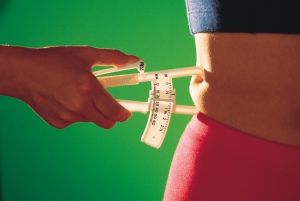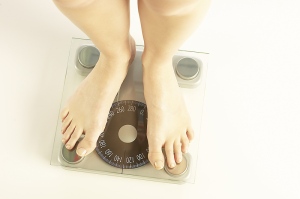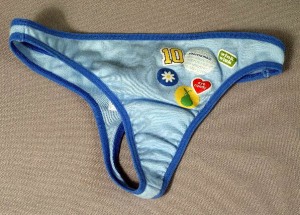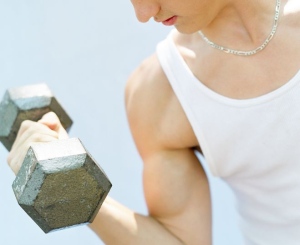Steroid Use in Teen Boys: Continuing the discussion…
Dr. Robyn J.A. Silverman

Powerful Parents are certainly a passionate bunch. I guess my article on steroid abuse among teens stirred up some good discussion yesterday in light of the cultural response to body image problems among our youth. Perhaps you were surprised that boys were affected just as girls have been affected. What else can we expect?
With so much concentrated focus on the war against obesity, it shapes up the insecurities in children who say to themselves, “I don’t want to be fat, I don’t want to be cast aside, put down, or put out, so I will do whatever it takes, even if it means putting my health as risk, to be thin, muscular, and admired. Is this the message we want to send to our youth—spooned to mouth by Hollywood starlets, He-man Gladiators, and appearance-driven magazines? To be thin, muscular and unhealthy rather than risk being called “overweight” or worse yet…“average?”

Research has shown that dieting and attending to one’s physique in negative ways has become so prevalent that the behavior of in a way, has become normalized. That means that those people who are NOT dieting, participating in some abnormal or disordered eating patterns, or trying to alter their body through surgery, drugs, or laxative abuse, are in affect, abnormal. One preteen in one of my Sassy Sisterhood Girls Groups said it clearly a few summers ago, “if you’re not dieting or something like it, you’re considered weird, snobby, kind of stuck on yourself, or like, NOT normal.” Great. What youth, whether we’re talking about a boy or a girl, wants to be abnormal?
So they reach out for assistance. They restrict food, they purge, they take laxatives, or they dope up with steroids. Well, what did we expect? Do you ever hear societal reverb recalibrated to say, “lose weight but don’t go too far?” Of “eat healthily, exercise wisely, and then accept yourself at the size your at? No. We hear…be better, faster, bigger! Be More! More! More!
I did an interview a few month’s back for a teen website in which I was asked about boys and body image. Here is a part of my answer:
Boys are dealing with something that is now informally being called “The Adonis Complex”—named after the Greek mythology figure Adonis who was half man and half god—he was considered the ultimate in masculine good looks and ideal physique for men. And, if you are familiar with Greek mythology, Adonis had a body that was so perfectly beautiful that Aphrodite, the goddess of love and beauty, fell in love with the site of him.
So what parents need to know is that while it’s not as common as it is for girls, (in fact, girls are 3 times as likely to feel bad about their bodies than boys) boys are also at risk of developing unhealthy eating habits and eating disorders. In fact, according to a study done in Australia, about 45 per cent of men were unhappy with their bodies to some degree, compared with only 15 per cent of men only 25 years ago. Remember, Boys are changing too—they also want to look good and desirable to others—they value the opinions of others, and they recognize that there is a connection between positive attention and how they look.
Research into boy’s body image has shown males are concerned with having that lean muscular look and of course, this makes them want to lose weight and increase their muscle mass- often in unhealthy ways. And the bottom line here is that again, messages that come from parents and the media have a strong influence on body image for teen boys as well as teen girls—but while it may be a large concern—and it deserves a lot of attention, we can do something about it—we can help our kids feel confident, healthy, happy and worthwhile-and that is what I am trying to do with my work with children, teens, parents, and educators.
So we must expect teens to come up with ways that make them “the best.” Because we tend to pay attention to the best. Who pays attention to mediocre? In our society we want it all—even if it means that we chisel away at ourselves, our health, and our self worth to get there. Yes, I’m talking abut the teens…but you know as well as I do, we’re also talking about adults. And somehow, we’re supposed to serve as examples.
In a world in need of role models that don’t come in retouched slinky dresses or couched in pumped up doped-filled muscles, we ask those who are truly trying to make a difference to scream the loudest. So go ahead…scream!
One of our resident role models, Amy Jussel, Executive Director of Shaping Youth (an Organization for which I am an Advisory Board member and Body Image expert, piggybacked my article on Steroid use in boys, which I wanted to share, at least in part, with all of you:
Take it away…Amy!
Awhile back I wrote about body image issues offering “equal opportunity toxicity” as young boys have increased body dysmorphia, emulating buffed boy, ripped six-pack icons of video games and ‘hunks’ modeled and merchandised ad nauseum.
Not getting alarmist, as we’re still in single digit growth percentages, but it’s worth the focus on BOYS who have been gaining on girls in eating disorders and tanked self-esteem as media and marketing serve up a quest for the almighty ‘hotness’ and adolescents end up with The Adonis Complex reverb.
This Sunday on our own Shaping Youth Advisory Board member Rona Renner’s radio show, you can hear the doctors tackle “adolescent body image” (podcasts archived too) as Rona and her guests help teens develop a healthier image of themselves beyond the media machine.
Gee, let’s start with Lightyear XSTREAM Energy. (and no, not the Buzz Lightyear kind) This energy drink contains Yohimbe, claiming to be an aphrodisiac and “natural sexual enhancer used for impotent males.” Or perhaps this new summer ’08 flavor of citrus “Crunk” which you may recall originated in ’04 with rapper/producer Lil John and the late Sidney Frank, of Jagermeister and Grey Goose libation fame.
Now, um, tell me, doctors…”Do you hear what I hear? Do you see what I see?”
The media/marketing blitz selling kids ways to last longer, get stronger, “be hot with a shot” is complicit in the escalation of body image problems wreaking havoc on this appearance-obsessed generation of kids.
Girls may receive more press about disordered eating and such, but ‘Bigorexia’ (photo credit at left from Ditch Diets Live Light by blogger Cari Corbet-Owen) is on the rise. (See Cari’s primer called ‘Who Gets the Adonis Complex?” for a helpful snapshot of milestones in media moments for male context)
These media corollaries are backed up by researchers like Alison Field, Harvard Medical School professor of pediatrics and lead researcher on the GUTS study [Growing Up Today]…
A synopsis of her outcomes with males?
“Although fewer males than females are preoccupied with a desire to be thinner, a non-trivial number of males are preoccupied with a desire to have more or better defined muscles. The latter concern is rarely assessed in studies that include males.”
And it’s more common than once thought, with a direct correlation of risk factors between boys unhealthy means used to gain weight, (e.g. steroids) and girls unhealthy means lose weight, (e.g. bulimia, diet pills, etc.) tied to “wanting to look like same-sex figures in the media.”
Ahem. Causal link, anyone? When I have 5th graders in our counter-marketing sessions worried about dieting and muscle mass, (boys AND girls) I’d say Houston, we have a problem.
How would Shaping Youth “counter-market” the buffed boy/steroid bit? (and intake of supplements of all kinds promising the lean, mean teen machine?)
Point to articles like this from Parenting Teens.com for starters:
“Teens abusing steroids may suffer reduced sperm count, shrinking testicles, impotence and difficulty urinating. All of this intimately associated with the equipment most men value very highly.
Teens on steroids also risk losing their hair and inappropriate breast development. One has to wonder how many takers there would be for steroids if these side effects were listed alongside the much-vaunted ‘desirable’ effects. This is why education on the (in excess of 70) side effects of steroids is almost a sure way to deal with steroid abuse among teens. The fact is these young people are simply unaware of this.
Imagine a pack of steroids bearing this equation: “Enormous increases in brute strength” soon followed by the shrinking of testicles, impotence, lowered sperm count and hair loss. With the writing on the wall few teens can dispute the ill effects of steroid abuse. It is still true that the underlying problem of low self esteem and poor body image must be addressed. Rest assured that if it is allowed to lie there unattended it will not go away. Instead it will find another destructive outlet.”
Info on Rona Renner’s Radio Show for this Sunday: (1-877-372-KIDS) or listen when posted on the website Details: The doctors will be talking about media and peer pressure to be thin or look sexy, as well as some of the ‘acting out’ that transpires with body insecurities in the form of cutting, eating disorders, depression or anxiety. Hey, maybe Dr. Robyn would call-in to Rona’s radio show and write us a guest editorial recap? Hmn…
Related Resources/Body Image/Boys
NIDA for Teens (Fact Sheets)
Adolescents Bulk Up Their Bodies, USA Today
The X/Y Factor by Rachel Abramowitz, L.A.Times
Tween Boys/Putting on the Spritz by Lori Aratani, L.A. Times
Shaping Youth Packaging Boyhood: Corporate Pirates Raid Boys’ Souls
Bigorexia & Muscle Building: Ditch Diets & Live Light.com
The Adonis Complex: How to Identify, Treat, & Prevent Body Obession in Men & Boys (book)
I’m, Like, SO Fat!: Helping Your Teen Make Healthy Choices About Eating & Exercise (book)
Looking Good: Male Body Image in North America (book)
About-Face: Body Image Books/Tips on Body Acceptance
NIDA: Anabolic Steroid Use in Teens, 2005
Kids Health: Steroids/Human Growth Hormone
Steroid Use by Teens Soaring (CBS News, 2003)
Packaging Boyhood.com (upcoming book/survey here!)
Amy Jussel is the Founder & Executive Director of Shaping Youth, a nonprofit, nonpartisan consortium concerned with harmful media and marketing messages to children.Prior to founding Shaping Youth, Amy spent over 20 years as a writer/producer in print, broadcast and film in commercial advertising as well as journalism. Her media background makes her uniquely qualified to assess the impact of multi-channel marketing in children’s lives.
Thanks, Amy! Let’s hear what all of you have to say…comment below!

Copyright: Dr. Robyn J.A.Silverman; http://wwwDrRobynsBlog.com and http://wwwBodyImageBlog.com
Filed under: Body Image, Body Image Articles, Body Image Research | Tagged: Adonis Complex, Amy Jussel, body esteem, Body Image, Boys, Dr. Robyn Silverman, Girls, health, media, Rona Renner, Shaping Youth, Steroids, Teens | 5 Comments »
























